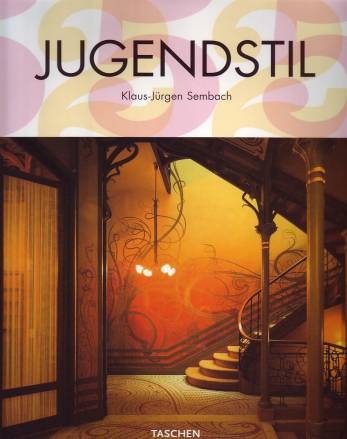|
|
|
Umschlagtext
„Ein vielschichtiger Überblick über Architektur, Möbeldesign und Handwerk mit den entsprechenden Ansätzen, sie künstlerisch neu zu beleben.'
Rezension
Der Autor sieht schon in Kap. 1 in der Bewegung das Charakteristikum des ausgehenden 19. Jhdts.: das Kino entsteht und der Jugendstil, das bewegte Bild und der bewegte Stil sind Ausgeburten des industriellen Zeitalters und begegnen sich auf der Weltausstellung in Paris 1900. Die Faszination der Bewegung hatte alle Bereiche des Lebens ergriffen. Die bildenden Kunst bemühte sich, die weltverändernden technischen Prozesse auf ihre Weise einzuholen. Dieser voluminöse Bildband erläutert in verständlichem Text und gut ausgewählten und reproduzierten Bildern das Gesamtphänomen Jugendstil.
Thomas Bernhard, lehrerbibliothek.de Verlagsinfo
TASCHEN's 25th anniversary - Special edition! Art Nouveau, whose emergence at the same time as cinema was no mere coincidence, represents the most remarkable attempt to reconcile the demands of the technical age with the undying wish for beauty and glorification—or to pit them against the other. Here the reform movement of the turn of the century is not only dealt with as an artistic event, but those economic and political interests which inspired, supported, and handicapped it are also taken into account. In the chapters "Movement," "Unrest", and "Equilibrium," the historical phenomenon as a whole is characterised and is also presented with its own distinct local features. The centres of Brussels, Nancy, Barcelona, Glasgow, Helsinki and Chicago are dealt with in subchapters as are Munich, Darmstadt and Weimar. Finally, Vienna, that city in which the synthesis achieved its culmination, is described separately. The outstanding artists are examined in detail in connection with the respective cities of their greatest activity. The result is a complex picture of the symbiosis of architecture, furniture design, and craftsmanship with their corresponding approaches to artistic revitalization. About the author: Klaus-Jürgen Sembach organised the exhibitions "Die Nützlichen Künste" (Useful Arts), 1981 in Berlin, "Zug der Zeit – Zeit der Züge" (The Railway Era), 1985 in Nuremberg, "So viel Anfang war nie – Deutsche Städte 1945–1949" (Never have there been so many beginnings – German cities 1945–1949), in Nuremberg and Berlin 1989, and has numerous publications on architecture, design, photography and film to his name. Inhaltsverzeichnis
6 BEWEGUNG
Wie die Moderne laufen lernte 32 UNRUHE Der Aufstand der Provinzen 40 Brüssel 64 Nancy 72 Barcelona 80 München 120 Weimar 140 Darmstadt 170 Glasgow 186 Helsinki 194 Chicago 204 AUSGLEICH Die Einführung der Moderne durch Wien 238 Bibliographie 239 Namenregister 240 Bildnachweis |

 Bei Amazon kaufen
Bei Amazon kaufen